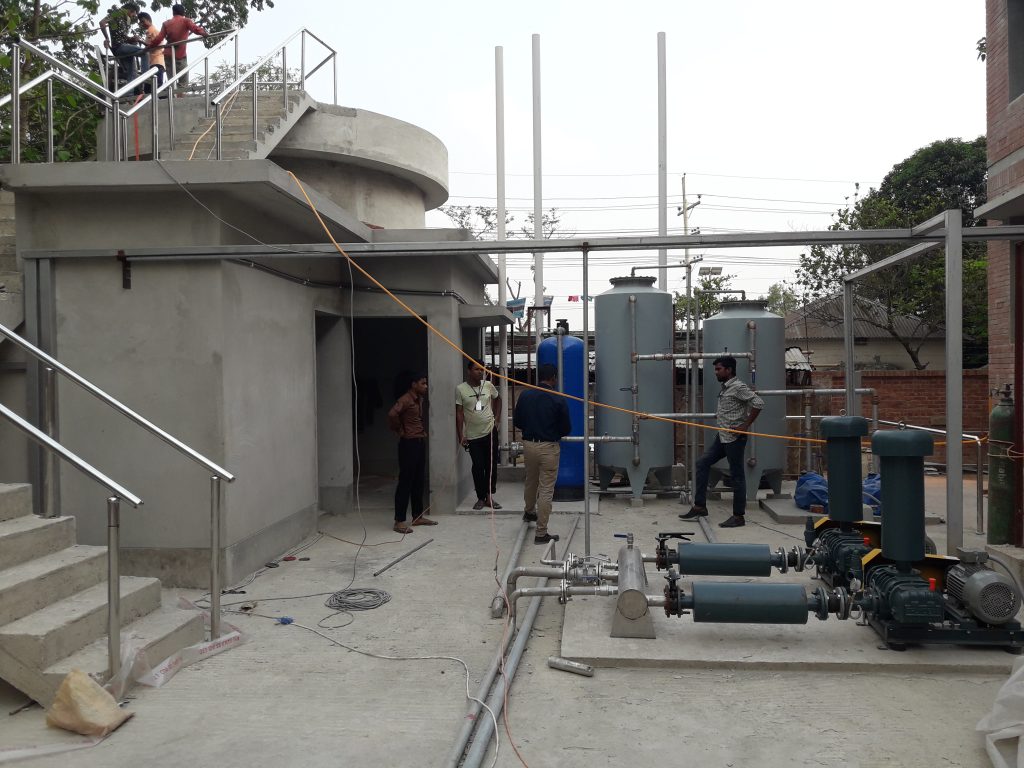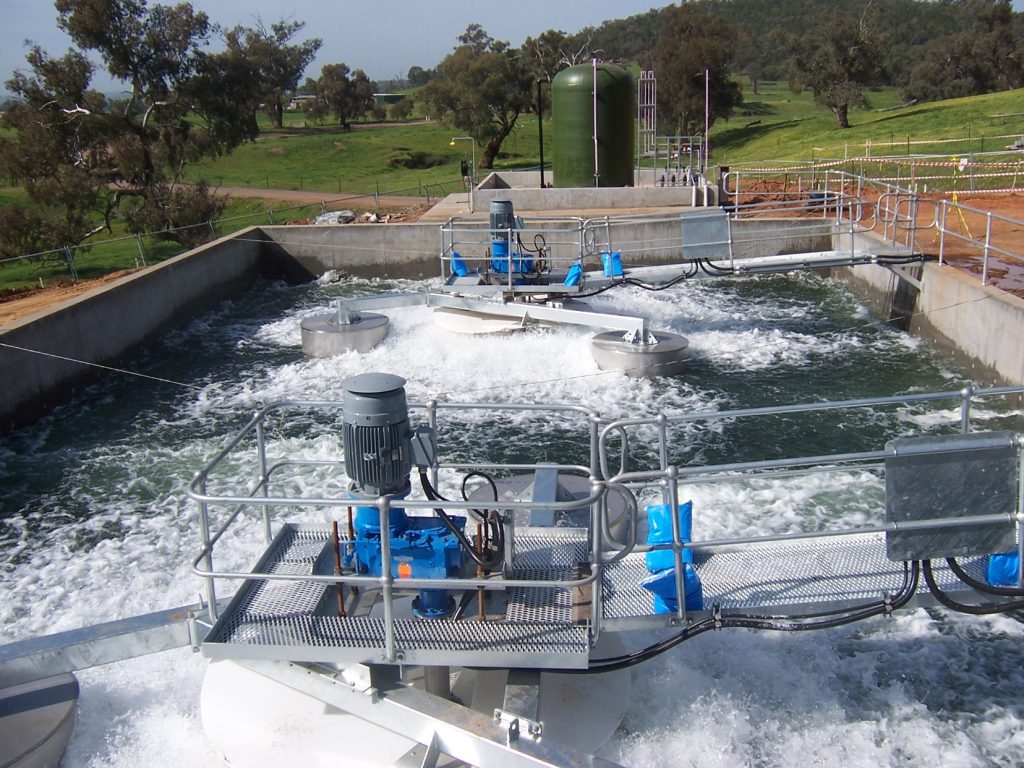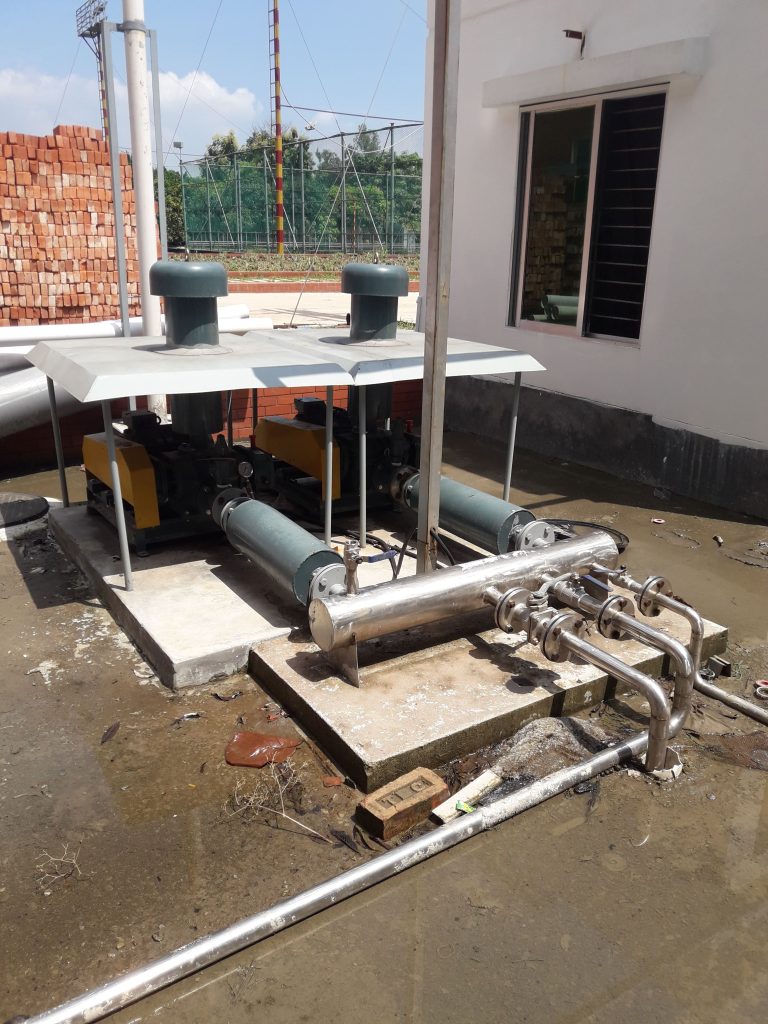STP(Sewage Treatment Plant):
Treating wastewater has the aim to produce an effluent that will do as little harm as possible when discharged to the surrounding environment, thereby preventing pollution compared to releasing untreated wastewater into the environment.
Sewage treatment generally involves three stages, called primary, secondary and tertiary treatment.
- Primary treatment consists of temporarily holding the sewage in a quiescent basin where heavy solids can settle to the bottom while oil, grease and lighter solids float to the surface. The settled and floating materials are removed and the remaining liquid may be discharged or subjected to secondary treatment. Some sewage treatment plants that are connected to a combined sewer system have a bypass arrangement after the primary treatment unit. This means that during very heavy rainfall events, the secondary and tertiary treatment systems can be bypassed to protect them from hydraulic overloading, and the mixture of sewage and stormwater only receives primary treatment.
- Secondarytreatment removes dissolved and suspended biological matter. Secondary treatment is typically performed by indigenous, water-borne micro-organisms in a managed habitat. Secondary treatment may require a separation process to remove the micro-organisms from the treated water prior to discharge or tertiary treatment.
Tertiary treatment is sometimes defined as anything more than primary and secondary treatment in order to allow rejection into a highly sensitive or fragile ecosystem (estuaries, low-flow rivers, coral reefs,…). Treated water is sometimes disinfected chemically or physically (for example, by lagoons and microfiltration) prior to discharge into a stream, river, bay, lagoon or wetland, or it can be used for the irrigation of a golf course, green way or park. If it is sufficiently clean, it can also be used for groundwater recharge or agricultural purposes.

How does a sewage treatment plant work?
The Sewage Treatment Plant Process Is Similar To The Way That A Septic Tank Works But Mechanical Components Provide A Process To Help Break Down Solids To Produce A Cleaner, More Environmentally Friendly Effluent.
Wastewater And Sewage, Usually From A Number Of Properties, Are Fed Into The Primary Settlement Tank Where Solids And Liquids Separate And The Liquor Flows Into The Ozone Chamber. In The Chamber, A Pump Aerates The Waste And Encourages Good Bacteria To Digest The Organic Matter, Breaking It Down And Purifying It.
As It Leaves The Final Chamber Known As The Humus Chamber, The Effluent Is Typically 95% Clean And Ready For Discharge Into Local Watercourses, Ditches Or Land Drainage Systems, Subject To Consent By The Environment Agency.
Csg Also Maintains Small Scale And Commercial Sewage Treatment Plants, Keeping Mechanical Components In Perfect Working Order Through Regular Servicing. Sewage Treatment Plants Also Need To Be Emptied At Least Once A Year To Keep The System Free Of The Sludge That Accumulates Naturally Over Time.
We Offer A Fast, Friendly And Very Efficient Service For Homeowners Who Need Help And Advice On Sewage Treatment Plants From The Experts In Domestic Sewage Collection.


